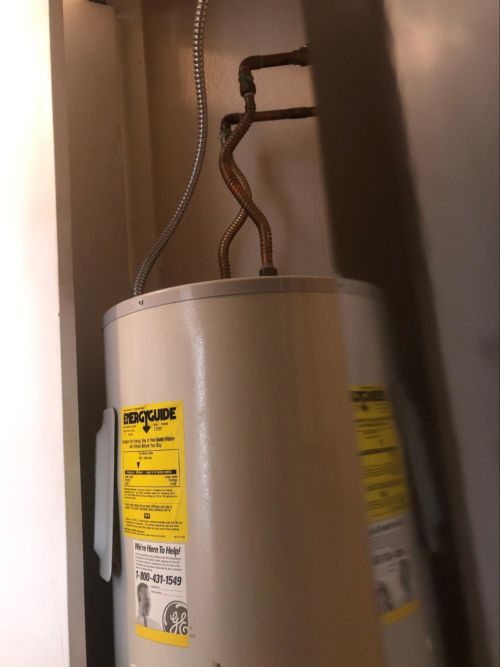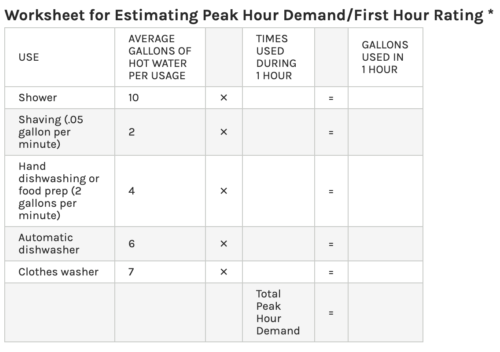What Size Water Heater Do I Need For My Phoenix Home?
April 28, 2020
If you need to replace your current water heater or are installing one for the first time, it’s imperative that you select and install the right size water heater for your home.
Installing a water heater that is too small means you won’t have enough hot water to support your home’s appliances.
On the other hand, installing a hot water heater that’s too large means you’ll be spending an unnecessary amount of money on a heater that’s too large.
So, how do you know which size water heater is best for your home?
The only way to accurately determine what size of water heater you need for your home is to have a plumber assess your hot water needs and home.
But, you can get a good idea of what size heater you need depending on whether you’re installing a tank or a tankless water heater.
Below, we’ll go into detail about the specific factors you’ll need to look to determine what size tank or tankless water heater you should install.
Rather just have a professional give you an exact size and quote? We can help with that. Learn about the hot water heater services we offer or…
How to determine tank water heater size

Water heater manufacturer label
Tank water heaters are sized by the number of gallons of water they can hold at a time.
On average, residential tank water heaters can hold between 30 and 80 gallons of water.
So, how do you know how many gallons of water you need your water heater to hold?
1. First, you’ll need to determine your home’s peak demand. Peak demand is the maximum amount of hot water your household needs at a time.
For example, if you run your dishwasher, start your washer and have 2 people in your home taking showers from 7:00-8:00 am., then your home’s peak demand would be the average amount of water used by:
- Your dishwasher
- Your washer
- 2 shower heads

Here’s a worksheet from Energy.gov that illustrates how to calculate total peak hour demand
So, in the example above, if you had:
- The dishwasher running (average of 6 gallons of hot water)
- The washer running (average of 7 gallons of hot water)
- And 2 showers going (average of 10 gallons of hot water each, so 20 gallons total)
Your peak demand would be 33 gallons of hot water.
2. Once you know what your household’s peak demand is, you’ll need to find a tank water heater with a First Hour Rating (FHR) that exceeds your peak demand. First hour rating is the number of gallons of hot water a tank water heater can provide per hour, so you’ll want a hot water heater with a first hour rating equal to your peak demand.
If we use our example above, you would need a hot water heater with a first hour rating of 33+ gallons of water to match your peak demand of 33 gallons.
How to determine tankless water heater size
Unlike tank water heaters, which keep a tank of water constantly heated, tankless water heaters heat water as it passes through the heater. So, instead of being measured by the number of gallons they hold, tankless water heaters are measured by their flow rate.
What is flow rate?
Flow rate is the number of gallons that a tank water heater can heat per minute (gpm).
To figure out what size of tankless water heater you need for your home you’ll need to:
1. Determine your home’s peak demand. We calculated peak demand above by the number of gallons your appliances use. When it comes to tankless water heaters, we calculate peak demand by adding up the average flow rates of the appliances you use at the same time.
Some average flow rates for common appliances include:
- Kitchen sink: 0.5–2.5 gpm
- Dishwasher: 1–2.5 gpm
- Washing machine: 1.5–2 gpm
- Shower: 1–3 gpm
Now, let’s use the same example as above. If we want to use the following appliances at the same time:
- The dishwasher (2.5 gpm)
- The washing machine (2 gpm)
- 2 showers (6 gpm total)
We would want a tankless water heater with a flow rate greater than 10.5 gpm. That way, we can ensure that we will have enough hot water to supply all of these appliances if they were used at once.
2. Determine the temperature rise. Once you’ve determined how many gallons per minute of hot water you need for your home, you’ll also have to figure out the temperature rise, which is how many degrees your incoming water needs to be heated to meet the temperature you’ve set for your hot water heater.
According to the EPA, Phoenix has an average groundwater temperature of 62-67 degrees. For the purpose of this example, we’ll say the groundwater is 65 degrees. If you want your water to be heated to 120 degrees, you’ll need a water heater with a temperature rise of 55 degrees (the difference between the temperature of water you want (120) and the temperature the water was originally (65).
Let’s sum it all up: To find the right size tankless water heater for your home, you’ll need to determine:
- Peak demand for your household in gpm (and find a water heater that exceeds this number)
- The temperature rise you need (the temperature you want minus the groundwater temperature)
However, as we mentioned above, to get an exact size for your new water heater, you’ll want a plumber to come and take a look at your home, current heater and assess your hot water demand.
Ready to install a new water heater in your Phoenix home? Hire a team you can trust: Patrick Riley
Installing a water heater can be stressful, especially if you have questions about the size, type or brand of system that will be best for your home and household. At Patrick Riley, we have years of experience helping Phoenix homeowners install the right size water heaters for their homes, and we’d be happy to help you too.
Get 10% off (Up to $150)

Ty Lindsay is the Director of Field Operations at Patrick Riley | Isley’s and a 15-year veteran of the plumbing and HVAC trades. In 2010, Ty earned his Journeyman’s plumbing license. He became a Master Plumber five years later and earned his Journeyman HVAC technician’s license that same year. Ty’s breadth of knowledge in plumbing and HVAC includes both residential and commercial work. He’s been a loyal member of the Patrick Riley | Isley’s team since 2016.
- Posted in:
- Buyer's Guide
